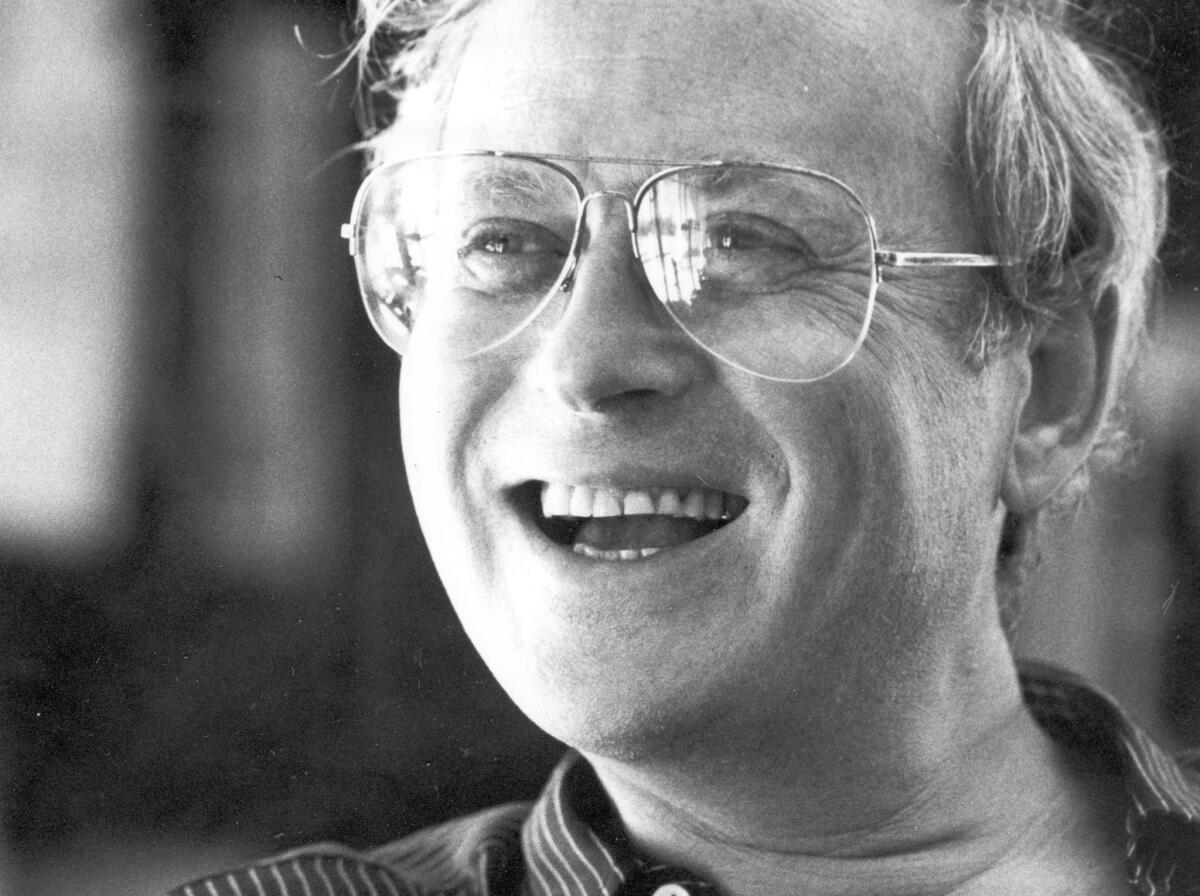Jeremy Tarcher dies at 83; maverick publisher of New Age bestsellers

- Share via
In the early 1960s Jeremy Tarcher packaged book deals for celebrities, which resulted in such comical titles as “Phyllis Diller’s Housekeeping Hints” and Johnny Carson’s “Happiness Is a Dry Martini.”
He might have continued in that vein if he hadn’t made a stop at the Esalen Institute, the Northern California hub of New Age thinking about human potential, where figures like Carlos Castaneda and Rollo May were challenging conventional ideas about the workings of the mind and body.
Undaunted by New York publishers who thought such ideas had marginal appeal, Tarcher went on to mine California’s counterculture for bestsellers, bringing out such consciousness-expanding works as “Drawing on the Right Side of the Brain” by Betty Edwards and “The Aquarian Conspiracy” by Marilyn Ferguson.
“I published books I cared about rather than books people thought would sell,” Tarcher told Publishers Weekly in 2013. “But it turned out that there were thousands of readers out there like me.”
Tarcher, a maverick publisher who specialized in books about health and human consciousness, died Sunday at his Bel-Air home of complications from Parkinson’s disease. He was 83.
His death was confirmed by his companion, Harriet Stuart.
Tarcher had boundless curiosity that “led him to discover the most innovative and exciting voices in the field of human potential,” Joel Fotinos, who heads the imprint that began in the early 1970s as J. P. Tarcher and is now part of Penguin, said this week. “Jeremy’s instinct for upcoming trends in the personal development genres was unequaled.”
Born in New York on Jan. 2, 1932, Tarcher grew up in a prosperous family, with his father the head of an advertising agency and his mother a lawyer. Everybody liked to read except for Tarcher, he later recalled. He was rejected by nearly every college he applied to, but his last choice turned out to be a good one: St. John’s College in Annapolis, Md., known for its “Great Books” curriculum.
“I knew I had found a very significant home there,” he recalled in a 1982 interview with the Los Angeles Times. “I would not be what I am now, where I am now, had it not been for St. John’s.”
Before book publishing, however, he worked in another medium: television.
Starting in the mail room at WNEW-TV in New York, he worked his way up to producer within a few months. Later he was the station’s public service director.
In 1957 he met Shari Lewis, who was, by his recollection, already “the queen of New York television” with Lamb Chop, her beloved puppet sidekick. He and Lewis were married in 1958, and he went on to produce her Saturday morning TV show for several years.
He turned to publishing out of concerns about tying his career to his wife’s fame. One of his first successes was the Carson book, which became a bestseller in 1965. Soon he was packaging book deals for other celebrities, including Diller, Zsa Zsa Gabor, Buddy Hackett and Joan Rivers.
His visit to Esalen in the late 1960s pushed him in a new direction. Excited by the whirlpool of beliefs and practices he found in sessions with figures like Timothy Leary and Linus Pauling, he tried to interest New York publishers in books about New Age topics. Their lack of interest led him to strike out on his own.
His first hit was “Mother Earth’s Hassle-Free Indoor Plant Book,” published in 1973. His next major success came from Edwards, a professor at Cal State Long Beach when Tarcher published her “Drawing on the Right Side of the Brain,” a 1979 bestseller that has sold more than 3 million copies and remains a classic guide on enhancing creativity.
He approached Edwards after reading an article she had written for The Times. At first she was reluctant to give him the book manuscript, which another publisher had rejected. “I told him they turned it down with such a savage letter that I’m just discouraged about submitting it again,” she recalled Thursday. “He said, ‘Oh, never mind, come on in and see me.’ So I did.
“Jeremy trusted his own judgment on books,” Edwards said. “When he believed in you, he went all out.”
Other popular books he published over the years include “Bikram’s Beginning Yoga Class” (1978) by hot yoga champion Bikram Choudhury; “Joy’s Way,” a memoir of spiritual healing by Dr. W. Brugh Joy; and “Seven Years in Tibet,” Austrian explorer Heinrich Herrer’s account of his trek across Tibet in the 1940s. Originally published in Germany in 1952, the latter book was reprinted by Tarcher in 1982 and made into a movie starring Brad Pitt in 1997.
Tarcher could have profited from publishing the authors in his family. In addition to Lewis, a prolific writer of children’s books, his sister, Judith Krantz, was a queen of the bestseller lists with her novels “Scruples” and “Princess Daisy.”
Lewis died in 1998. Besides Stuart, he is survived by Krantz; a daughter, Mallory; and a grandson.







